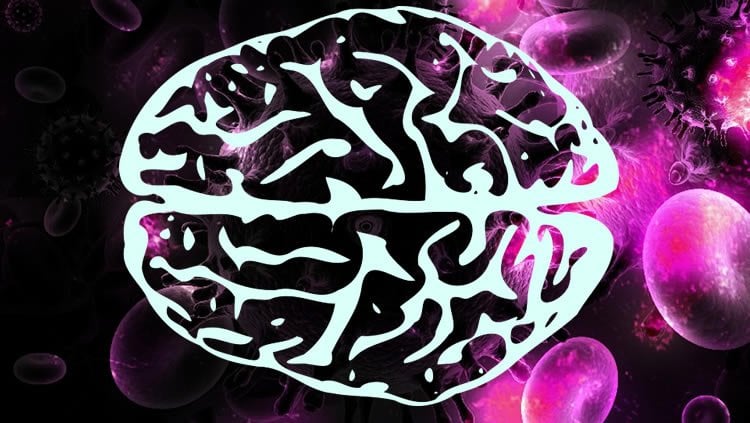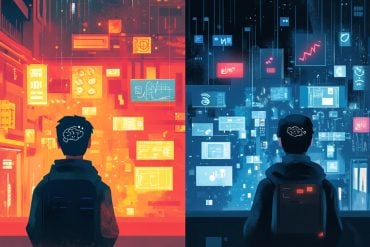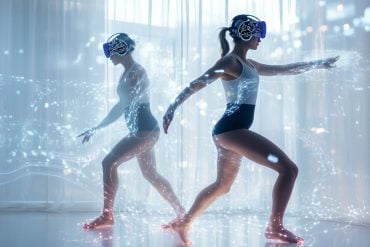Summary: According to researchers, our senses of smell and vision make us aware that someone is on the verge of sickness, even before symptoms appear.
Source: Karolinska Institute.
The human brain is much better than previously thought at discovering and avoiding disease, a new study led by researchers at Karolinska Institutet in Sweden reports. Our sense of vision and smell alone are enough to make us aware that someone has a disease even before it breaks out. And not only aware – we also act upon the information and avoid sick people. The study is published in the scientific journal Proceedings of the National Academy of Sciences (PNAS).
The human immune system is effective at combating disease, but since it entails a great deal of energy expenditure disease avoidance should be part of our survival instinct. A new study now shows that this is indeed the case: the human brain is better than previously thought at discovering early-stage disease in others. Moreover, we also have a tendency to act upon the signals by liking infected people less than healthy ones.
“The study shows us that the human brain is actually very good at discovering this and that this discovery motivates avoidance behaviour,” says principal investigator Professor Mats Olsson at Karolinska Institutet’s Department of Clinical Neuroscience.
By injecting harmless sections of bacteria, the researchers activated the immune response in participants, who developed the classic symptoms of disease – tiredness, pain and fever – for a few hours, during which time smell samples were taken from them and they were photographed and filmed. The injected substance then disappeared from their bodies and with it the symptoms.
Another group of participants were then exposed to these smells and images as well as those of healthy controls, and asked to rate how much they liked the people, while their brain activities were measured in an MR scanner.
They were then asked to state, just by looking at the photographs, which of the participants looked sick, which they considered attractive and which they might consider socialising with.
“Our study shows a significant difference in how people tend to prefer and be more willing to socialise with healthy people than those who are sick and whose immune system we artificially activated,” says Professor Olsson. “We can also see that the brain is good at adding weak signals from multiple senses relating to a person’s state of health”.

This he sees as biological confirmation of the argument that survival naturally entails avoiding infection.
“Common sense tells us that there should be a basic behavioural repertoire that assists the immune system. Avoidance, however, does not necessarily apply if you have a close relationship with the person who is ill,” says Professor Olsson. “For instance, there are few people other than your children who you’d kiss when they have a runny nose. In other words, a disease signal can enhance caring behaviour in close relationships. With this study, we demonstrate that the brain is more sensitive to those signals than we once thought.”
The research has been carried out in collaboration with several parties, especially with the Stress Research Institute at Stockholm University.
Funding: The study was supported by the Swedish Research Council, the Swedish Foundation for Humanities and Social Sciences, the Knut and Alice Wallenberg Foundation and Deutscher Akademischer Austauschdienst.
Source: Karolinska Institute
Image Source: NeuroscienceNews.com image is in the public domain.
Original Research: Abstract for “Behavioral and neural correlates to multisensory detection of sick humans” by Christina Regenbogen, John Axelsson, Julie Lasselin, Danja K. Porada, Tina Sundelin, Moa G. Peter, Mats Lekander, Johan N. Lundström, and Mats J. Olsson in PNAS. Published online May 22 2017 doi:10.1073/pnas.1617357114
[cbtabs][cbtab title=”MLA”]Karolinska Institute “Brain Detects Disease in Others Even Before it Breaks Out.” NeuroscienceNews. NeuroscienceNews, 24 May 2017.
<https://neurosciencenews.com/brain-disease-detection-6760/>.[/cbtab][cbtab title=”APA”]Karolinska Institute (2017, May 24). Brain Detects Disease in Others Even Before it Breaks Out. NeuroscienceNew. Retrieved May 24, 2017 from https://neurosciencenews.com/brain-disease-detection-6760/[/cbtab][cbtab title=”Chicago”]Karolinska Institute “Brain Detects Disease in Others Even Before it Breaks Out.” https://neurosciencenews.com/brain-disease-detection-6760/ (accessed May 24, 2017).[/cbtab][/cbtabs]
Abstract
Behavioral and neural correlates to multisensory detection of sick humans
Throughout human evolution, infectious diseases have been a primary cause of death. Detection of subtle cues indicating sickness and avoidance of sick conspecifics would therefore be an adaptive way of coping with an environment fraught with pathogens. This study determines how humans perceive and integrate early cues of sickness in conspecifics sampled just hours after the induction of immune system activation, and the underlying neural mechanisms for this detection. In a double-blind placebo-controlled crossover design, the immune system in 22 sample donors was transiently activated with an endotoxin injection [lipopolysaccharide (LPS)]. Facial photographs and body odor samples were taken from the same donors when “sick” (LPS-injected) and when “healthy” (saline-injected) and subsequently were presented to a separate group of participants (n = 30) who rated their liking of the presented person during fMRI scanning. Faces were less socially desirable when sick, and sick body odors tended to lower liking of the faces. Sickness status presented by odor and facial photograph resulted in increased neural activation of odor- and face-perception networks, respectively. A superadditive effect of olfactory–visual integration of sickness cues was found in the intraparietal sulcus, which was functionally connected to core areas of multisensory integration in the superior temporal sulcus and orbitofrontal cortex. Taken together, the results outline a disease-avoidance model in which neural mechanisms involved in the detection of disease cues and multisensory integration are vital parts.
“Behavioral and neural correlates to multisensory detection of sick humans” by Christina Regenbogen, John Axelsson, Julie Lasselin, Danja K. Porada, Tina Sundelin, Moa G. Peter, Mats Lekander, Johan N. Lundström, and Mats J. Olsson in PNAS. Published online May 22 2017 doi:10.1073/pnas.1617357114






